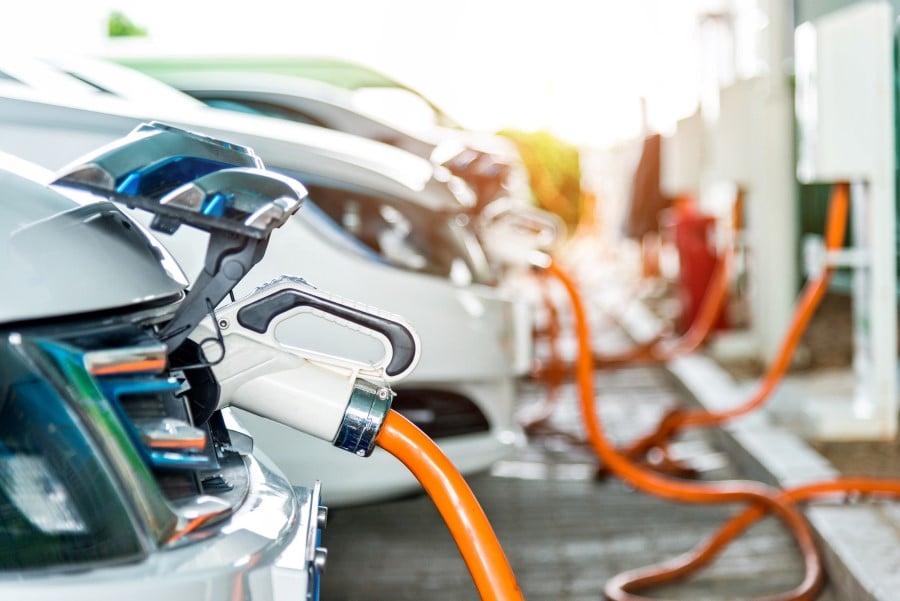
Ensuring no one is left behind on the journey to Net Zero in Australian transport must be front of mind for government and industry.
At a webinar presented by Ai Group’s Environment Connect member network and the Victorian Government, panellists — representing industry leaders — shared how they were working to make the transition to Zero Emission Vehicles (ZEVs) as seamless as possible for Australians.
Katie Brown, Director, Energy Strategy, Energy Strategy Division, Department of Environment, Land, Water & Planning, outlined Victoria’s ambitious agenda and its Zero Emissions Road Map.
“All of us — industry and government — have a role in educating and building confidence in both the private sector and in the community about what the future looks like,” she said.
“How do we make this transition as seamless as possible to ensure people aren’t left behind? That’s a key part of the work we need to do.”
With the transport sector accounting for about 25 per cent of emissions in Victoria — a proportion that is growing — the state is working hard to accelerate the uptake of ZEVs.
“ZEVs can provide opportunities for significant reductions in greenhouse gases, particularly when they are charged from a renewable energy source like solar,” Ms Brown said.
As part of its Climate Transit Strategy, the Victorian Government developed seven sector pledges to reach Net Zero targets by 2050.
“We want to take full advantage of the global shift towards ZEVs, and we’ve set ourselves a target of 50 per cent of all light vehicles sales being ZEVs by 2030,” Ms Brown said.
Some of Victoria’s key focus areas are around grid integration, looking at issues such as:
“There is a huge amount going on,” Ms Brown said.
John Pappas, Vice President Information & Digital Services Operations, Toyota Australia, and Chief Executive, Lexus Australia, spoke of the groups’ continuing work to diversify and how providing options for customers is essential.
“Creating efficient mobility solutions for all Australians is our number one priority at Toyota Australia, and we are excited about the growing momentum and opportunities developing in the energy and the mobility landscape,” he said.
“Reaching carbon neutrality is a journey.”
Toyota has led the way in vehicle electrification in Australia, launching its hybrid electric Prius back in 2001.
Since then, the group has expanded hybrid technology into mainstream models and diversified its range.
Rapid advancement has occurred in the past few years, as hybrid vehicles have become mainstream.
In 2017, Toyota Australia’s hybrid electric sales mix was 4 per cent of total sales. By 2021, that proportion had soared to more than 20 per cent.
Almost 50 per cent of Lexus sales are now electrified.
Australians have vastly different motoring needs, with locations from inner cities to suburbs, regional and rural areas and outback Australia.
Providing a diverse range of vehicle options is going to be key to supporting Australians on the journey to Net Zero.
“Toyota Australia will have a vehicle and powertrain to suit every consumer – and our unique landscape,” Mr Pappas said.
“We are taking action to build a sustainable society with a clear goal that no one will be left behind.”
Toyota Australia has also made significant developments in the hydrogen space.
Its state-of-the-art Hydrogen Centre at its former manufacturing site in Altona was built to showcase the benefits of hydrogen fuel cell technology as part of the group’s commitment to developing sustainable technologies.
This commitment to reducing emissions extends to Toyota Australia’s business operations, with a goal of reaching carbon neutrality through the use of renewable energy and other initiatives by 2025.
It has solar generation at sites across the country, which will be equivalent to more than 620 households of power. This will provide a high proportion of Toyota’s energy needs, allowing net positive generation of green hydrogen and battery EV recharging.
Mr Pappas said a national CO2 policy for new vehicles sales, along with infrastructure development, would be Toyota’s top requests for policymakers.
“If we have a mandated CO2 policy, it will help us to bring in more product for our market,” he said.
Transition is also a priority for Ampol Australia, the largest distributor and producer of energy for mobility in Australia.
It estimates 2.5million EVs will be operational in the country by 2030.
“We want to be part of the energy mobility market going forward,” General Manager Energy James Myatt said.
“Traditionally, our supply chain involves people coming to our sites; it’s a well-known supply chain.
“In the future, as electricity becomes a greater part of the fuel mix, we have to think more about where people are going to charge and what that means for us as a company and how we position ourselves going forward, including how to provide home charging for our customers.”
Ampol expects most charging to be done at home for the passenger market, with commercial vehicles requiring tailored solutions at depots and public hubs.
It has identified reliability as a weakness with public fast charging and wants to reverse that trend; research shows only about 55 per cent of all public fast chargers start successfully.
“We have a dual issue of pump availability and reliability,” Mr Myatt said.
“We want to have a much higher rate of success when it comes to charging.”
Ampol officially opened its first AmpCharge EV charging site in Alexandria, NSW, last month — the first in an initial rollout of 120 new sites to be delivered on Ampol forecourts Australia-wide by December next year.
The site will be capable of delivering charge to an EV at up to 150kw and has the capacity to charge at least two vehicles concurrently.
It has solar panels and solar battery storage provisions and the energy used by the chargers will be 100 per cent offset by Large Scale Generation Certificates to the net equivalent electricity consumption.
“As we start to get more involved in the electricity market, providing electricity to places where people need to charge — at home, on the road or at work – it means we’re building an electricity operation within the company so our ability to operate in the wholesale markets is another key aspect,” Mr Myatt said.
“We will be a fully integrated energy company as we are in the fuel business.”
EVs are a key part of Toll Group’s sustainability plan.
Toll, a major user of vehicles and fuel and a provider of logistics and transport services, is committed to Net Zero by 2050 but acknowledges many challenges need to be overcome to reach the target.
“The transport industry needs to do a lot of heavy lifting if Net Zero by 2050 is to be achieved,” Nathan Perrott, General Manager Operations Australia, said.
“More than 18 per cent of total emissions in Australia derives from transport. Approximately 40 per cent of this figure derives from road freight.”
The urgency to embrace transition is compounded by the fact that Australian freight volumes are projected to increase by 35 per cent by 2040.
“Combustion of fuel will remain a key source of emissions,” Mr Perrott said
“The challenge is how to shift from the reliance on diesel fuel to alternative sources of energy.”
Changes to Australian vehicle design rules in line with international standards is a crucial next step: truck width in Australia is limited to 2.5m compared to 2.6m internationally.
The limit means there are just 14 electric truck models available to purchase in Australia, compared to 58 in North America, Europe and China.
“The cost of redesigning these newer, safer, lower emission vehicles after market is prohibitive,” Mr Perrott said.
Concessions around mass – both battery EVs and fuel-cell hydrogens — are also needed.
“The existing mass and width regulations encourage operators to hang on to polluting clunkers because of the increased payload,” Mr Perrott said.
“We need to move to Euro 6 engines as soon as possible. The Commonwealth is proposing all new truck models approved from July 1, 2027, and all new heavy vehicles manufactured from July 1, 2028, be Euro 6.
“But, without incentives to purchase, the benefits will take a long time to flow through. The government has policy levers that it can pull to encourage the adoption of newer, greener trucks but has been reluctant to do so in the freight space. Government incentives to purchase remain limited to light vehicles.
“The Government focus on light vehicles perhaps explains why light vehicle emissions to 2030 are projected to reduce at more than double the rate of truck emissions.
“Finally, we need the vehicle charging infrastructure in place to give industry the confidence to invest. It makes sense to co-locate the charging infrastructure with rest facilities.”
In closing the webinar, Lee Miezis, Chief Executive, Environment Protection Authority (EPA) Victoria, said: “It’s pleasing, as the environmental regulator, to hear about the action that’s happening across all sectors of industry and government to tackle this important issue.
“Action on vehicle emissions is critical to reduce air pollution and address climate concerns.”

Wendy Larter is Communications Manager at the Australian Industry Group. She has more than 20 years’ experience as a reporter, features writer, contributor and sub-editor for newspapers and magazines including The Courier-Mail in Brisbane and Metro, the News of the World, The Times and Elle in the UK.